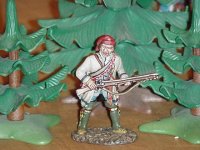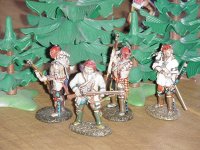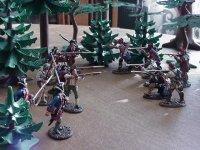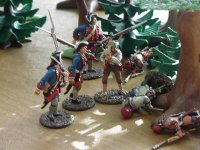mestell
Lieutenant Colonel
- Joined
- Feb 12, 2008
- Messages
- 7,997
Alexandre d’Agneau Douville was born on the Island of Montreal, Quebec, Canada on July 25, 1730. He was a French Canadian of mixed French and Indian blood. It was a very common and well accepted practice in “New France” for French soldiers and French immigrants to the new world to inter-marry with Indians. The offspring of these interracial marriages were called Metis (pronounced MAY tee). Thus it was for Douville, for the record of his death can be found listed on the Metis Cultural History web site.
He was either in the French Army or a member of the Quebec Militia at the outbreak of the French and Indian War. The Metis Cultural History web site mentions that he was a “cadet” at the time of his death. It is my theory that he was in the Quebec Militia due to his native background.
Prior to the spring of 1756 he was garrisoned at Fort Duquesne at the Forks of the Ohio River. Soon he would be ordered to the Ohio country and the western frontier of Virginia where his activities would raise an alarming stir among the Virginia settlers and the Virginia provincial militia.
More to come . . .
Mike
He was either in the French Army or a member of the Quebec Militia at the outbreak of the French and Indian War. The Metis Cultural History web site mentions that he was a “cadet” at the time of his death. It is my theory that he was in the Quebec Militia due to his native background.
Prior to the spring of 1756 he was garrisoned at Fort Duquesne at the Forks of the Ohio River. Soon he would be ordered to the Ohio country and the western frontier of Virginia where his activities would raise an alarming stir among the Virginia settlers and the Virginia provincial militia.
More to come . . .
Mike





